

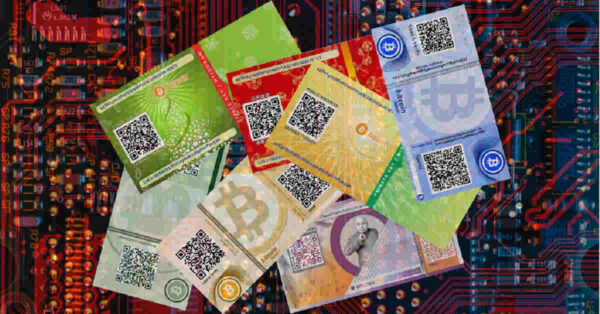
In previous articles, we looked at how to set up a hardware and mobile/software wallet. In this article, we are going to look at how to set up a paper wallet. Because they have no connection to the internet, paper wallets are the most secure form of bitcoin and crypto-wallets. But, because of their form (paper), they are also the most at risk of damage, destruction, or loss.
As the name suggests, a paper wallet is a printed or handwritten wallet. For this article, we are going to use bitaddress.org to generate our paper wallet.
Head over to bitaddress.org. The first thing the site is going to ask you to do is mouse around the screen to create randomness for the new wallet’s encryption.
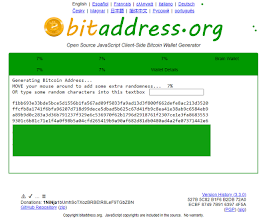
Once the address has been generated, the following screen will show your bitcoin address and your private key.
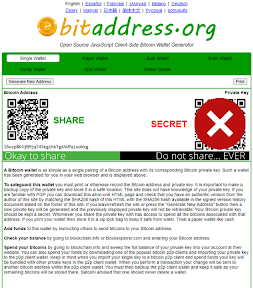
Bitaddress.org will give you several options for your paper wallet: Single Wallet (above), Paper Wallet, Bulk Wallet, Brain Wallet, Vanity Wallet, Split Wallet, and the wallet’s details. Technically, all you need is the bitcoin address and the private key offered by bitaddress.org, print it out, and you have your paper wallet.
Select Paper Wallet, and you will be presented with a stylized paper wallet as in the picture below. Since this article is for beginners, we focus on single and paper wallets, and we won’t be going into Bulk, Brain, Vanity, and Split wallets.
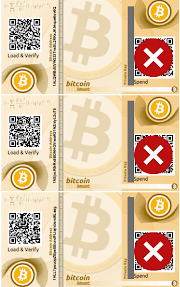
Finally, under Wallet Details, if you were to enter your Private Key in the field provided, you will be presented with a complete breakdown of the associated bitcoin wallet.
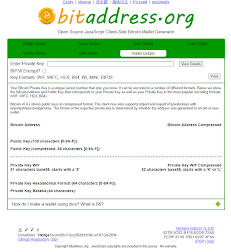
From the picture above, you can see why keeping your private key secret is so important. Only the private key owner is expected to have that information, and if some random person can access your private key, they have access to your bitcoin.
Sending bitcoin to the wallet will require either the use of a phone or tablet with a camera to scan the QR Code or the bitcoin address will have to be typed into the sending wallet. Again, paper wallets can be the most secure form of wallets, but paper wallet users take an increased amount of risk in handling their assets. Paper wallet users have to be mindful of the chance they could lose the paper wallet, the ink runs as the wallet prints, or the ink becomes hard to read over time.
Like a hardware wallet, you want to be sure to put your paper wallet in as secure of a place as possible. If you used a service like bitaddress.org, print out more than one copy and put them in different, secure locations. Consider putting the wallet in a fire-resistant security box or a safe deposit box that only you have access to.
Paper wallets should not be taken lightly and require a considerable amount of forethought on the part of the user. It is not recommended for beginners in bitcoin and crypto to use a paper wallet, but it is, after all, your choice.
Share This Article
Join 10,000+ forward thinkers! Get crypto education in your inbox.